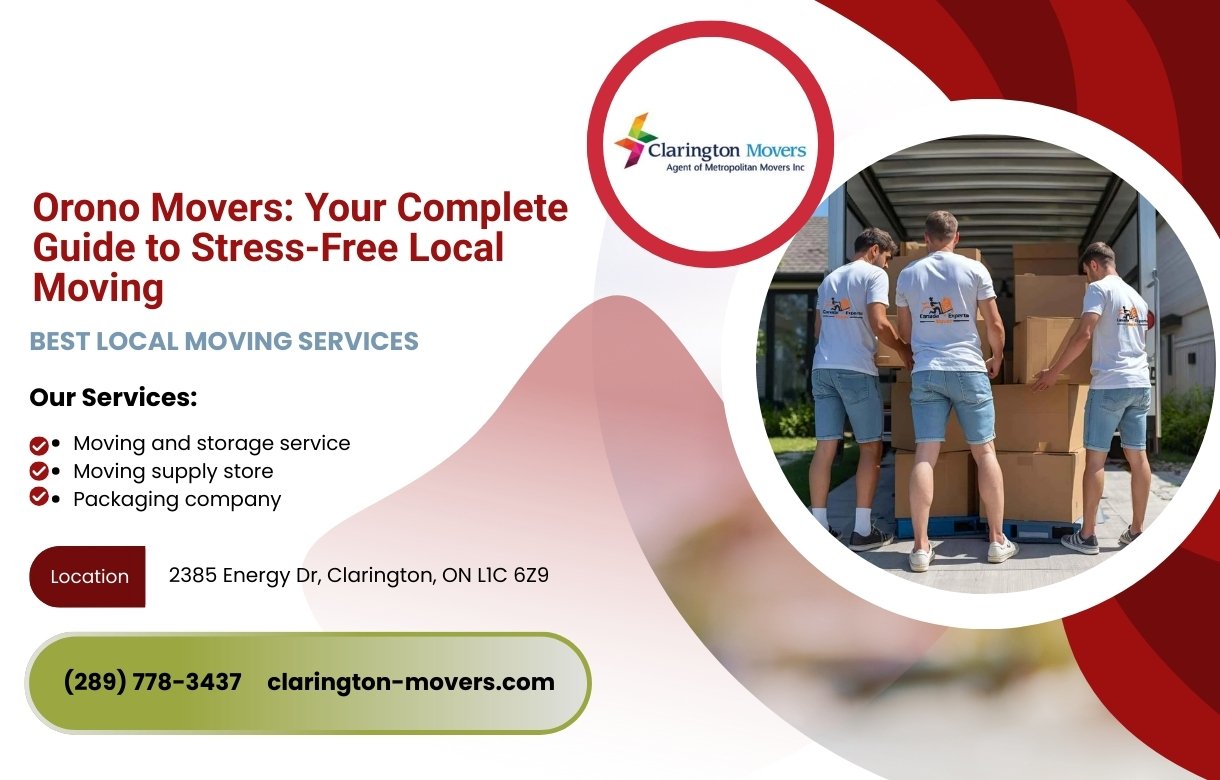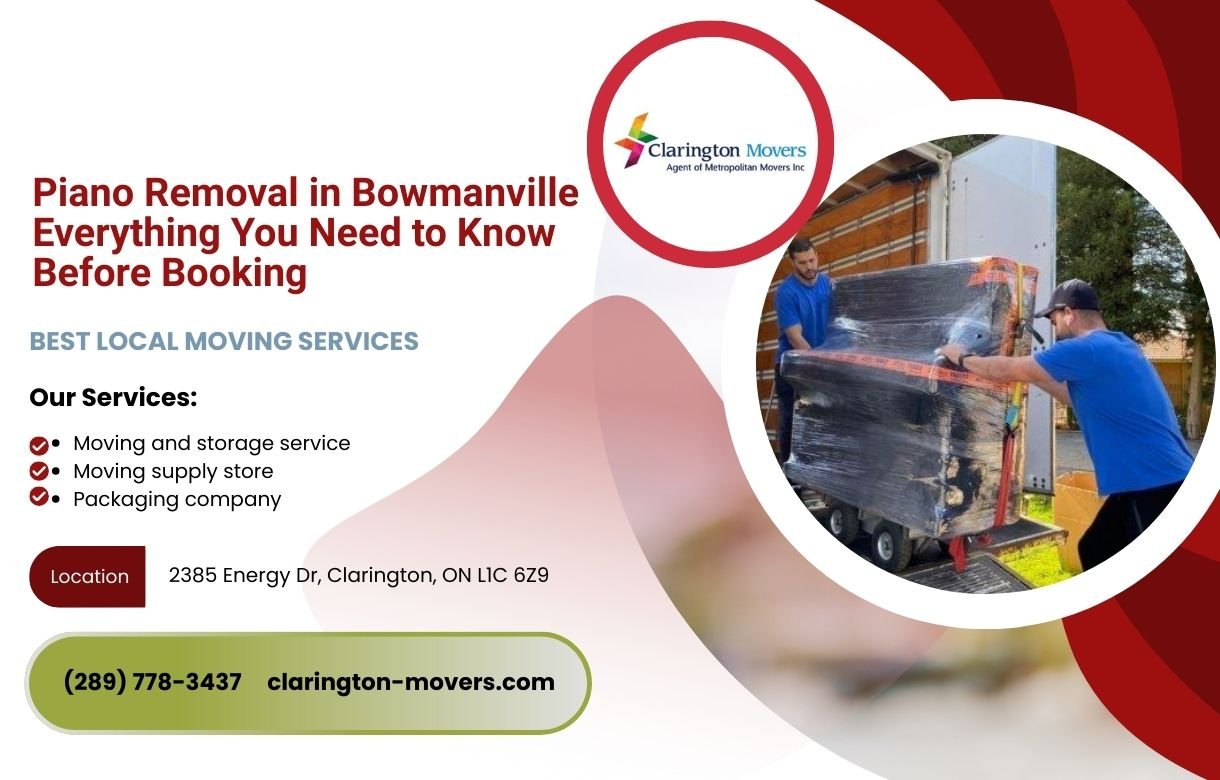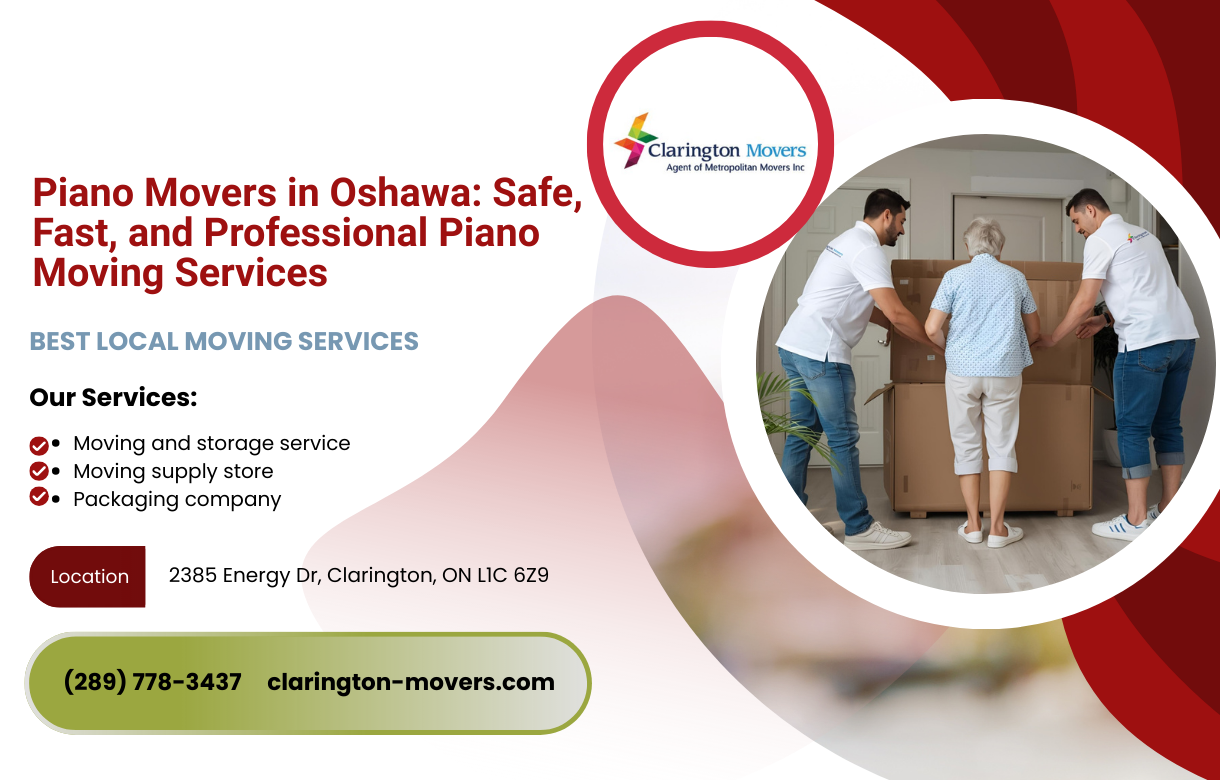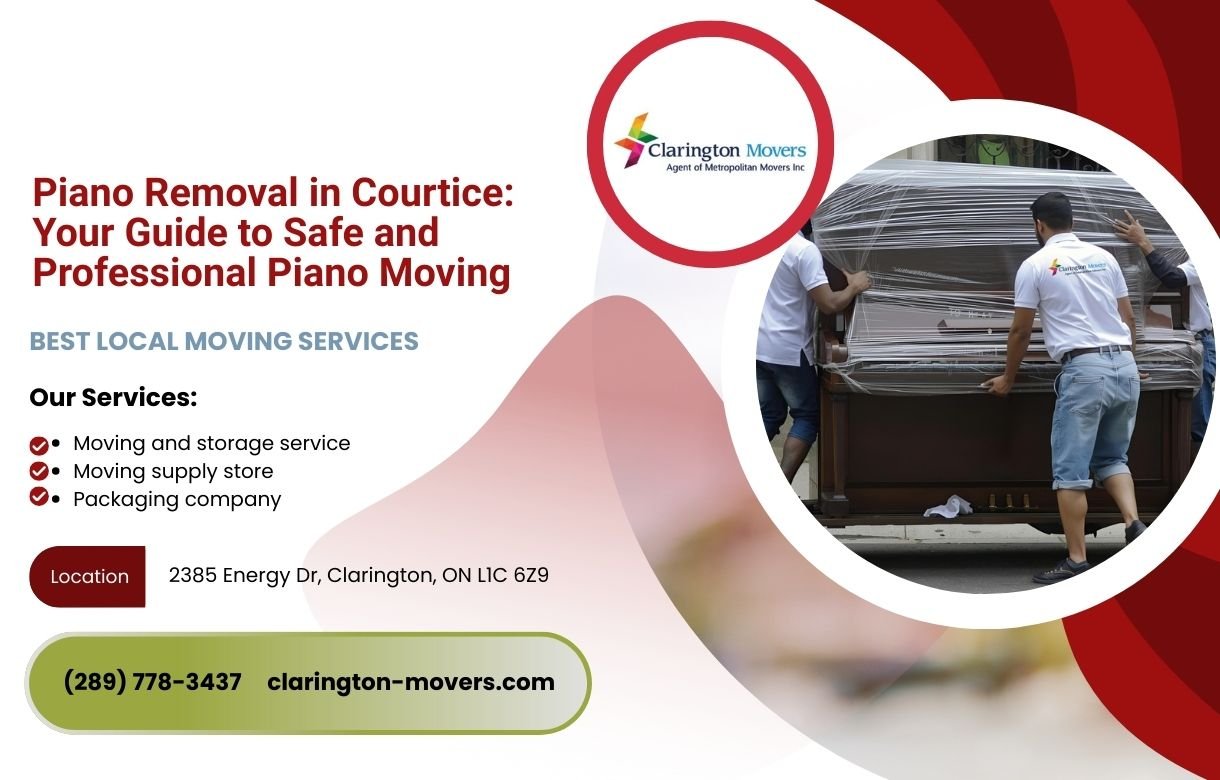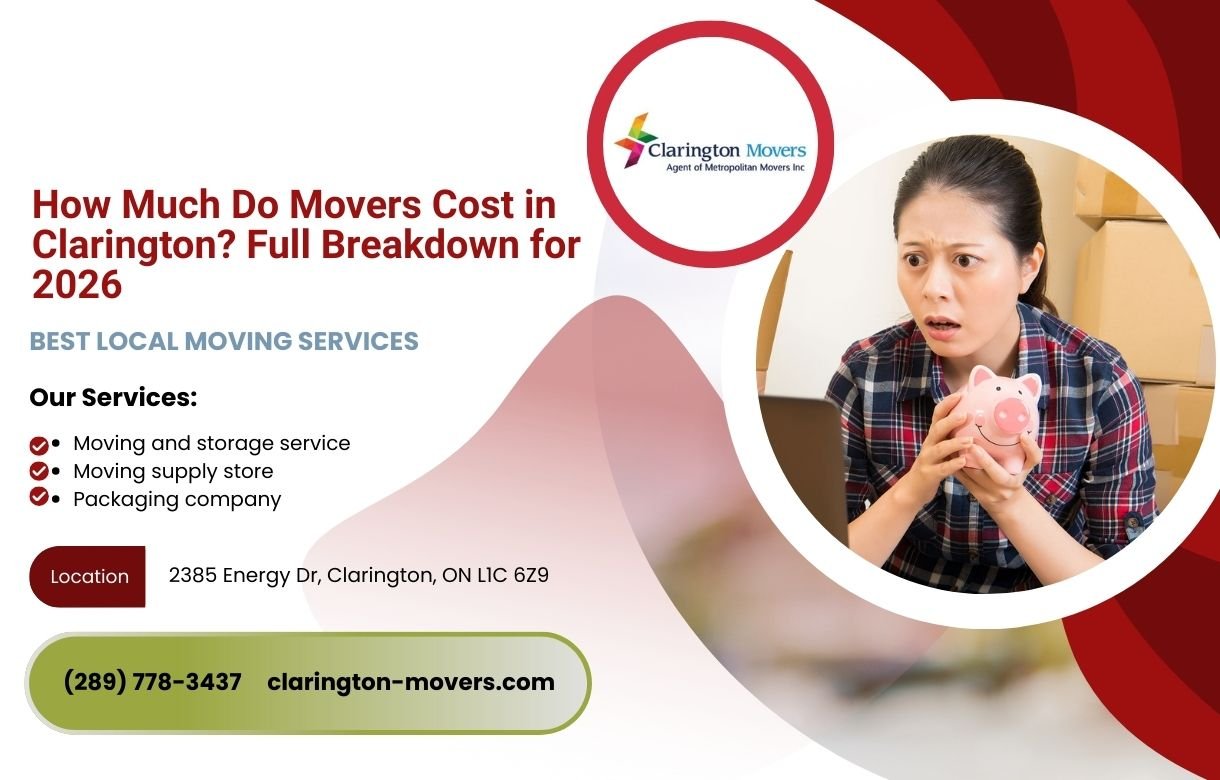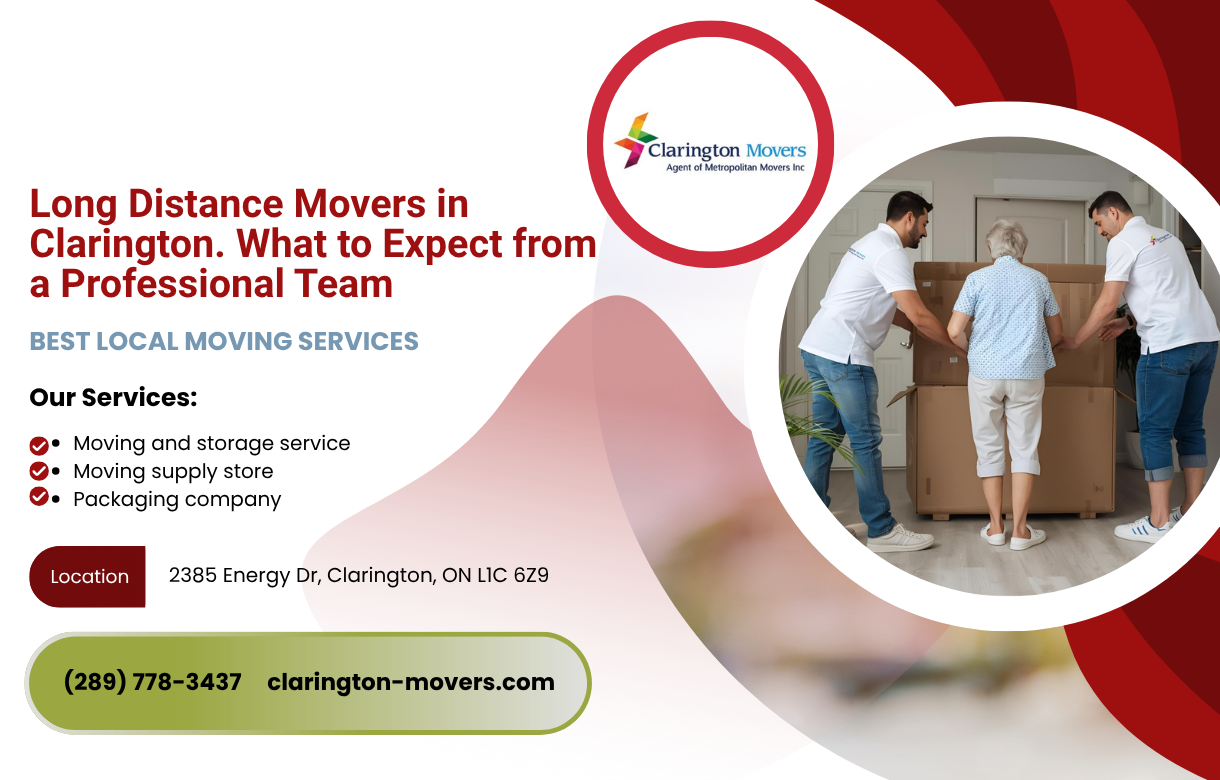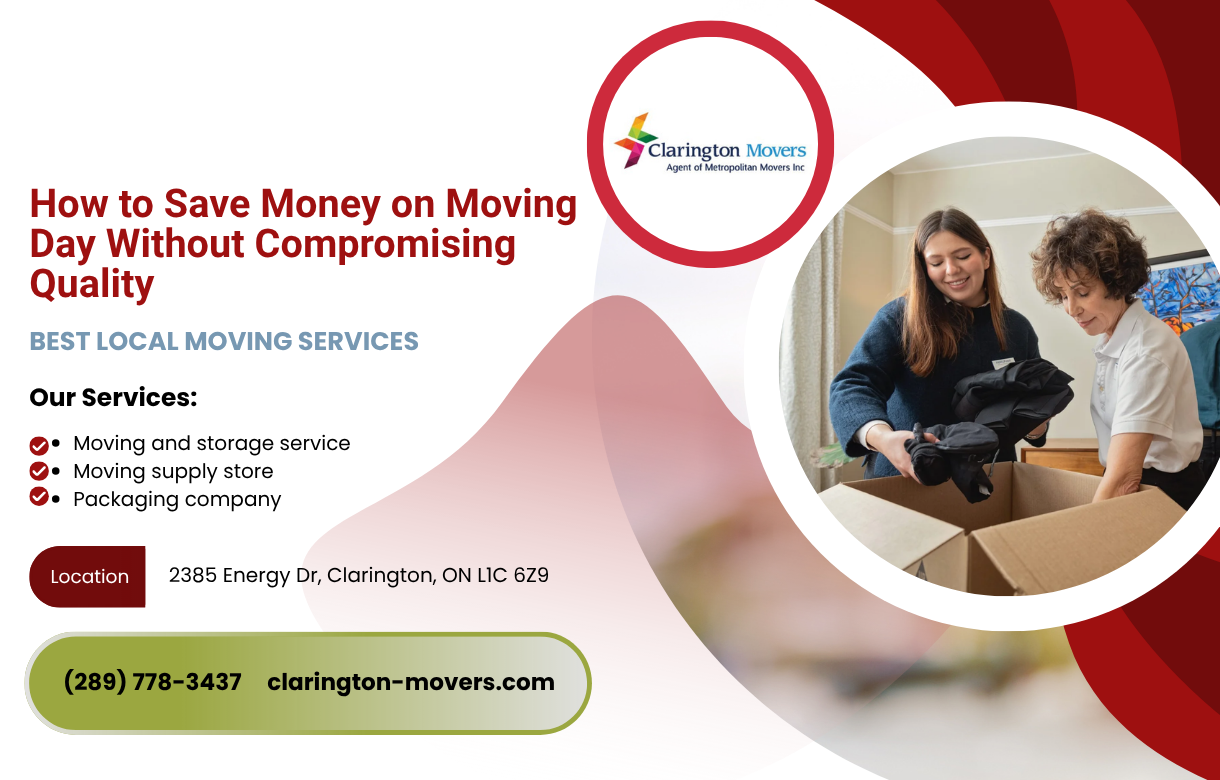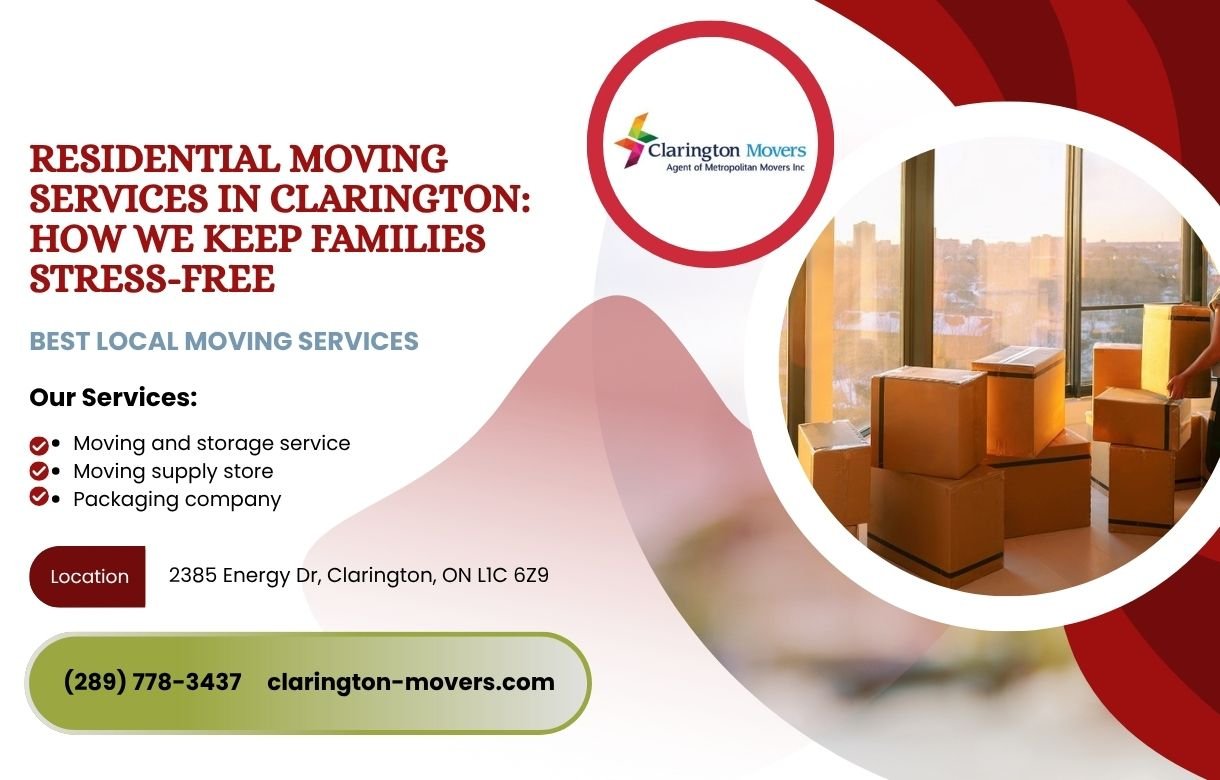How to Pack Fragile Items Like a Pro: Expert Advice from Clarington Movers
The sound of breaking glass during a move is every homeowner’s nightmare. Whether it’s your grandmother’s china, expensive electronics, or treasured artwork, fragile items require special attention and proper packing techniques to survive the journey to your new home. If you’re planning a move in Clarington, Bowmanville, Courtice, Newcastle, or the surrounding Durham Region, knowing how to protect your delicate belongings can save you from heartbreak and financial loss.
Packing fragile items in Clarington isn’t just about wrapping things in newspaper and hoping for the best. It’s a skill that combines the right materials, proven techniques, and careful planning. Professional movers have spent years perfecting these methods, learning from experience what works and what leads to disaster. The good news is that with the right guidance, you can apply these same professional strategies to protect your most precious possessions.
This comprehensive guide will walk you through everything you need to know about moving fragile items safely. From selecting proper materials to mastering wrapping techniques, we’ll share the expert knowledge that professional packers use every day. Whether you’re tackling the packing yourself or considering professional help, understanding these principles ensures your delicate belongings arrive at your new home intact and ready to be enjoyed for years to come.
Why Proper Packing Matters for Fragile Items
The difference between items arriving safely and items arriving shattered often comes down to how they were packed. Even professional movers who handle boxes with care can’t prevent damage if items weren’t properly protected inside. Moving trucks experience vibrations, sudden stops, and shifting loads that create forces strong enough to break inadequately packed items.
Beyond the financial cost of replacing broken items, there’s the emotional impact of losing irreplaceable treasures. Family heirlooms, wedding gifts, and sentimental pieces carry memories that can’t be purchased again. Taking the time to pack these items correctly isn’t just about protecting physical objects—it’s about preserving the stories and emotions they represent.
Insurance considerations also make proper packing essential. Many moving insurance policies have limitations on coverage for items that weren’t packed appropriately. If you’re filing a claim for damaged goods, the insurance company will investigate whether proper packing materials and techniques were used. Professional packing services provide documentation that your items were protected according to industry standards, giving you stronger protection if the unexpected occurs.
Essential Materials for Packing Fragile Items
Before you start wrapping anything, gather the right supplies. Using proper materials is the foundation of successful fragile item packing. While it might be tempting to cut corners with whatever’s lying around your house, investing in quality packing materials pays dividends in protection.
Start with sturdy moving boxes in various sizes. Small to medium boxes work best for fragile items because they prevent overpacking, which adds excessive weight and increases breaking risk. Look for boxes specifically designed for dishes, glasses, or electronics when possible—these feature extra reinforcement and built-in dividers that provide superior protection.
Bubble wrap is your best friend when packing delicate items. Choose bubble wrap with larger bubbles for maximum cushioning. Packing paper is another essential material, perfect for wrapping individual items and filling empty spaces. Never use newspaper directly on items as the ink can transfer and stain your belongings. If you’re using recycled newspaper, wrap items first in plain packing paper before adding newspaper layers.
Foam sheets, packing peanuts, and air pillows serve as excellent void fillers that prevent items from shifting during transport. Specialty items like dish dividers, glass packs, and mirror boxes provide additional protection for specific item types. Don’t forget strong packing tape—use quality tape designed for moving rather than standard office tape, which doesn’t hold up under stress.
Step-by-Step Guide to Packing Different Fragile Items
Different types of fragile items require different packing approaches. Understanding the specific vulnerabilities of each item type helps you provide appropriate protection.
How to Pack Glassware Safely
Glassware demands special attention because of its extreme fragility. Start by selecting a small to medium box—never overload a single box with too much glassware. Line the bottom of the box with several inches of crumpled packing paper or bubble wrap to create a cushioning base.
Wrap each glass individually, starting with sheets of packing paper tucked inside the glass. This reinforces the most vulnerable parts. Next, wrap the outside completely, folding paper over the top and bottom. For added protection, wrap each piece again in bubble wrap, securing with tape. Place glasses upright in the box rather than on their sides, as this is their strongest position structurally.
Create layers separated by cardboard dividers or additional cushioning. Never let wrapped glasses touch each other or the box sides directly. Fill any empty spaces with packing paper or bubble wrap so nothing can shift. The box should feel firm when closed—if items move when you shake it gently, add more cushioning material.
Packing Dishes and China
Plates and bowls require a similar approach with a few modifications. Wrap each piece individually with packing paper, using at least three to four sheets per item. Place paper between each plate as you stack them, and wrap the entire stack together with additional paper and bubble wrap.
Stand plates on their edges rather than laying them flat in the box. This position distributes stress more effectively and reduces breakage risk. Place heavier items like dinner plates on the bottom and lighter items like saucers toward the top. Use dish dividers if available, or create dividers from cardboard to keep stacks separated.
For fine china or antique dishes, consider double-boxing. Pack the wrapped items in one box with cushioning, then place that entire box inside a larger box with several inches of packing material surrounding it on all sides. This extra layer dramatically increases protection for irreplaceable pieces.
Protecting Electronics and Appliances
Electronics present unique challenges because they contain delicate internal components sensitive to shock and static electricity. If you still have the original packaging, use it—manufacturers design these boxes specifically to protect during shipping. If original boxes aren’t available, use appropriately sized moving boxes with plenty of cushioning.
Remove batteries from electronics before packing to prevent corrosion or electrical damage. Wrap items in anti-static bubble wrap when possible, or place them in anti-static bags first. For computers, tablets, and TVs, protect screens with foam sheets or cardboard before wrapping. Take photos of cable connections before disconnecting anything so you remember how to set everything up at your new home.
Small appliances like coffee makers or toasters should have removable parts taken out and packed separately. Wrap the main unit thoroughly and ensure nothing can rattle around inside during transport. For our clients seeking comprehensive protection, our packing and unpacking services in Clarington include expert handling of all electronic items with professional-grade materials.
Moving Artwork and Mirrors
Artwork and mirrors require specialized techniques because of their unique shapes and extreme fragility. For framed pictures, create an X across the glass with painter’s tape to prevent shattering if the glass breaks. Wrap the entire piece in bubble wrap, paying extra attention to corners which are particularly vulnerable.
Use mirror boxes or picture boxes designed for flat items when possible. If these aren’t available, sandwich artwork between pieces of cardboard cut to size, then wrap the entire package. Never stack framed items directly on top of each other—always use substantial cushioning between layers.
Large mirrors often benefit from professional packing services because of their size and weight. If packing yourself, consider creating a wooden crate for very large or valuable pieces. Mark these boxes clearly as fragile and indicate which end should remain upright. For valuable artwork, consider having professional appraisers document condition before the move for insurance purposes.
Handling Antiques and Collectibles
Antiques and collectibles often combine multiple fragility factors—delicate materials, irregular shapes, and high value. Document each piece with photos before packing. This creates a record of pre-move condition and helps identify items if you need to file insurance claims.
Wrap antiques in acid-free tissue paper first to protect finishes and prevent chemical reactions. Follow with bubble wrap and secure with tape that won’t leave residue. For items with protruding parts like vase handles or figurine limbs, provide extra padding around these vulnerable areas.
Climate-controlled environments matter for certain antiques, particularly wooden furniture, paintings, and instruments. If your move involves storage between locations, choose facilities offering storage and moving services in Clarington with climate control to prevent warping, cracking, or other temperature-related damage.
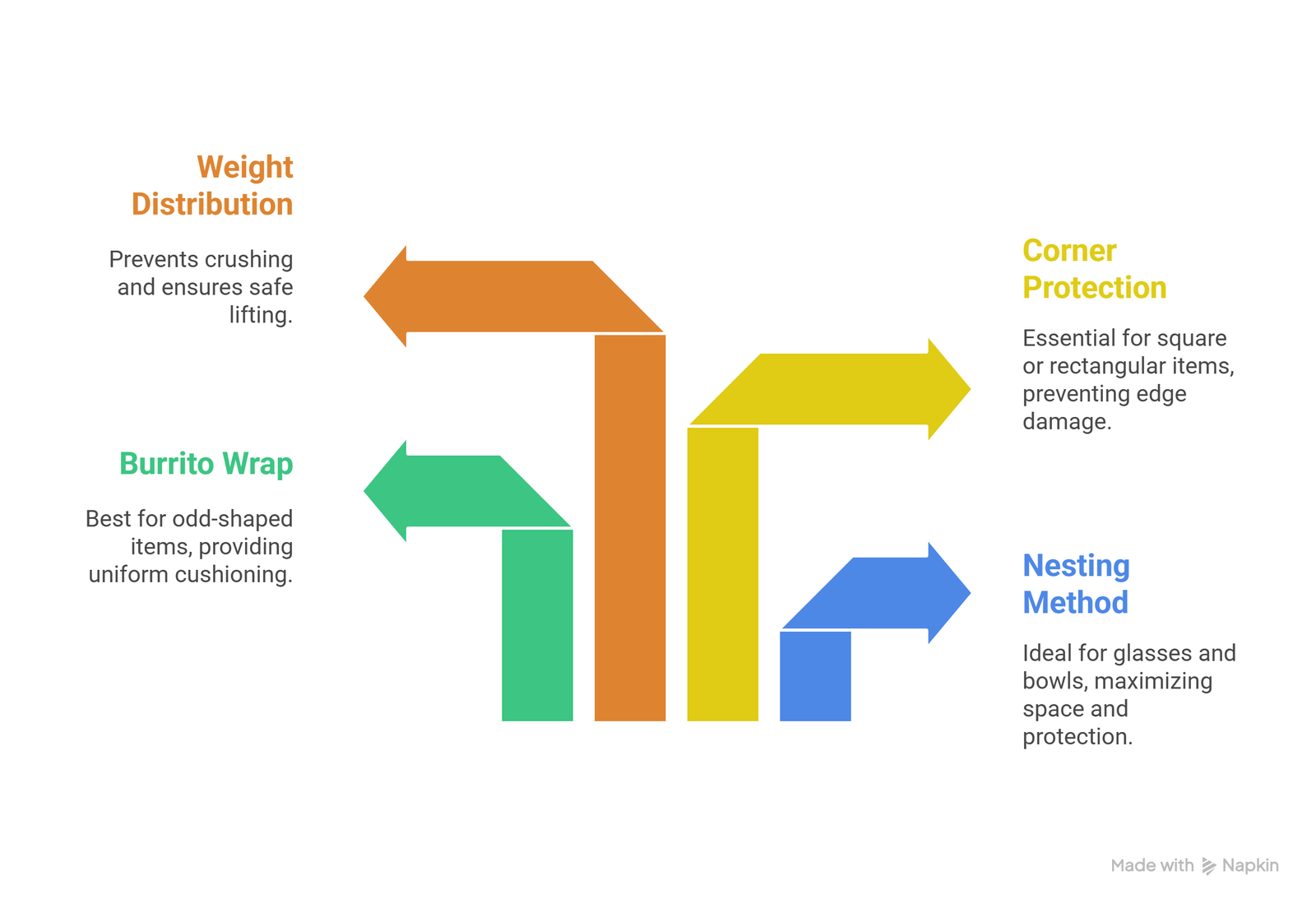
Professional Packing Techniques That Make a Difference
Professional packers know tricks that dramatically improve protection. One key technique is the “nesting” method for glasses and bowls. Place smaller wrapped items inside larger wrapped items of similar shape, creating layers of protection while maximizing space efficiency.
The “burrito wrap” technique works excellently for odd-shaped items. Lay out a sheet of bubble wrap, place the item in the center, and roll it up like a burrito. Fold the ends in and secure with tape. This creates a uniform package that’s easier to pack and provides consistent cushioning all around.
Corner and edge protection is critical because these areas absorb the most impact. Use extra layers of bubble wrap on corners, or invest in foam corner protectors designed specifically for this purpose. For square or rectangular items, this small extra effort prevents the majority of damage.
Creating proper weight distribution in boxes prevents crushing and makes boxes safer to carry. Heavy items go in small boxes, light fragile items in larger boxes. Within each box, place heavier items on bottom and lighter items on top. The box should feel balanced when lifted—if all weight is on one side, reorganize the contents.
Labeling and Organization Strategies
Proper labeling is just as important as proper packing. Mark every box containing fragile items clearly on all sides with “FRAGILE” in large letters. Use bright-colored tape or stickers so these boxes are instantly identifiable. Include directional arrows showing “This Side Up” to ensure boxes are handled correctly.
Number your boxes and keep a detailed inventory list. For each box, note the general contents and specific fragile items inside. This allows you to quickly locate specific items after the move and helps movers understand which boxes need extra care. Include the destination room on each label so boxes go directly to their proper location, reducing unnecessary handling.
Create a “Load Last, Unload First” category for your most fragile items. Pack these boxes last so they go on the truck last, positioning them where they’ll experience the least shifting. When unloading, these boxes come off first so you can immediately inspect them and unpack in a controlled manner rather than leaving them stacked for days.
Take photos of boxes from multiple angles showing how items were packed and cushioned. If damage occurs and you need to file insurance claims, this documentation proves you used appropriate packing methods. Store these photos digitally where you can easily access them from your new location.
Common Mistakes to Avoid When Packing Fragile Items
Even well-intentioned packers make mistakes that compromise protection. Overpacking boxes is one of the most common errors. When boxes are too heavy or too full, they’re more likely to drop, bottom out, or crush items inside. Follow the rule that if you can’t comfortably carry a box, it’s too heavy.
Using inadequate cushioning materials leads to breakage. Empty spaces in boxes allow items to shift and collide during transport. Every box should be filled completely with appropriate cushioning so contents don’t move when you shake it gently. If you hear things moving, add more packing material.
Mixing fragile and non-fragile items in the same box creates risk. The weight and hardness of non-fragile items can crush delicate pieces. Keep fragile items in dedicated boxes where you can control cushioning and weight. For those relocating throughout the Durham Region, our local moving services in Clarington include box inspection to ensure proper packing before loading.
Failing to test box strength before packing is another mistake. Reused boxes may have weakened bottoms or sides that give out under weight. Always inspect boxes for damage and reinforce bottoms with extra tape. When in doubt, use a new box—replacing a box costs far less than replacing broken items.
When to Consider Professional Packing Services
While DIY packing is certainly possible, certain situations call for professional expertise. If you own extensive collections of fragile items—like crystal stemware collections, fine china sets, or valuable artwork—professional packers bring efficiency and techniques that ensure everything is properly protected.
Time-constrained moves benefit enormously from professional packing. If you’re relocating quickly for work or can’t take time off to pack, professional services complete in hours what might take you days. This ensures nothing is rushed or poorly packed due to time pressure.
High-value items often justify professional packing from both protection and insurance perspectives. Professional services provide documentation proving items were packed to industry standards. If damage occurs despite proper packing, you have much stronger insurance claims. For specialized items like pianos, our piano movers in Clarington have the specific training and equipment these delicate instruments require.
Physical limitations or health concerns make professional packing services not just convenient but necessary. Packing requires reaching, bending, lifting, and sustained physical activity. For seniors or anyone with mobility challenges, our senior moving services in Clarington include compassionate packing assistance that accommodates physical limitations.
Fragile Items Packing Comparison
| Packing Method | Protection Level | Time Required | Cost | Best For |
| DIY Basic (newspaper, random boxes) | Low | Moderate | $50-$100 | Non-valuable items only |
| DIY Professional (proper materials, techniques) | Good | High | $150-$300 | Most household fragiles |
| Partial Professional (DIY some, pros for high-value) | Very Good | Moderate | $300-$600 | Balanced approach |
| Full Professional (everything packed by pros) | Excellent | Low | $600-$1,200+ | High-value collections, time-sensitive moves |
Benefits of Choosing Clarington Movers for Fragile Items
At Clarington Movers, we’ve perfected the art of protecting delicate belongings through years of experience serving families throughout Bowmanville, Courtice, Newcastle, Orono, and Oshawa. Our team receives ongoing training in the latest packing techniques and uses only professional-grade materials that exceed industry standards.
We understand that your fragile items aren’t just possessions—they’re memories, investments, and treasures. That’s why we approach every packing job with the same care we’d want for our own valuables. Whether you need full-service packing for your entire home or assistance with specific high-value items, we customize our services to match your needs and budget.
Our comprehensive insurance coverage provides peace of mind that your items are protected throughout the moving process. We document everything we pack, creating detailed inventories and photographic records. This transparency ensures you know exactly what was packed, where it was placed, and its condition at every stage of your move.
For clients moving within the Durham Region, we offer specialized services tailored to local needs. Our house moving services in Bowmanville, Newcastle, and Courtice include fragile item handling as standard practice, ensuring your delicate belongings receive expert care regardless of where you’re moving.
Frequently Asked Questions
What’s the best way to pack wine glasses and stemware?
Wine glasses require extra attention due to their delicate stems. Wrap each glass individually, stuffing the bowl with packing paper first to reinforce it from inside. Wrap the stem area with extra layers, as this is the most vulnerable part. Use cell boxes (divider boxes) specifically designed for stemware, which prevent glasses from touching. Always pack stemware upright, never on their sides, as the stem is strongest when supporting weight vertically.
Should I pack fragile items myself or hire professionals?
This depends on several factors including the value and quantity of fragile items, your available time, and your confidence level. For everyday dishes and common glassware, DIY packing with proper materials works well. For high-value items like antiques, artwork, or extensive collections, professional packing provides better protection and insurance documentation. Many people choose a hybrid approach—packing most items themselves while hiring professionals for their most valuable pieces.
How much bubble wrap should I use for each item?
Generally, use enough bubble wrap to create at least two complete layers around each item, with extra padding on corners and vulnerable points. Small items might need only one layer if wrapped tightly, while large or very delicate items benefit from three or more layers. The wrapped item should feel cushioned when you press gently—if you can feel hard edges or points, add more wrap. Remember that bubble wrap is relatively inexpensive compared to replacing broken items.
Can I pack different types of fragile items in the same box?
While possible, it’s generally better to keep similar items together. If you must combine different item types, wrap each thoroughly and use dividers to create separate sections within the box. Never mix heavy fragile items with light fragile items, as the weight difference increases breakage risk. Always ensure adequate cushioning prevents different items from touching each other directly, and fill all empty spaces completely.
What should I do if something breaks during the move?
Document any damage immediately with photos showing the broken item, the box it was packed in, and the packing materials used. Keep all packaging materials as evidence. Contact your moving company right away to report the damage and understand your next steps. If you have moving insurance, file a claim promptly according to their procedures. Professional moving companies like Clarington Movers will work with you to resolve damage claims fairly and efficiently.
Ready to Protect Your Precious Belongings?
Packing fragile items in Clarington doesn’t have to be stressful when you know the right techniques and have access to professional support. Whether you’re carefully wrapping each piece yourself or entrusting your treasures to experienced hands, proper protection ensures your delicate belongings survive the journey to your new home intact and ready to create new memories.
At Clarington Movers, we’re committed to treating your fragile items with the same care we’d give our own family heirlooms. Our team of trained professionals uses industry-leading techniques and materials to ensure everything from everyday glassware to priceless antiques arrives safely. We serve families and businesses throughout Clarington, Bowmanville, Courtice, Newcastle, Orono, and Oshawa with the same dedication to excellence that has made us one of the region’s most trusted moving companies.
Don’t risk heartbreak and financial loss by cutting corners on packing your fragile items. Whether you need full-service professional packing, partial assistance with high-value items, or expert advice for DIY packing, we’re here to help. Contact Clarington Movers today at (289) 778-3437 or visit our contact page for a free consultation and quote. Let us show you why protecting fragile items like a pro starts with choosing the right moving partner. Your treasures deserve nothing less than expert care!


